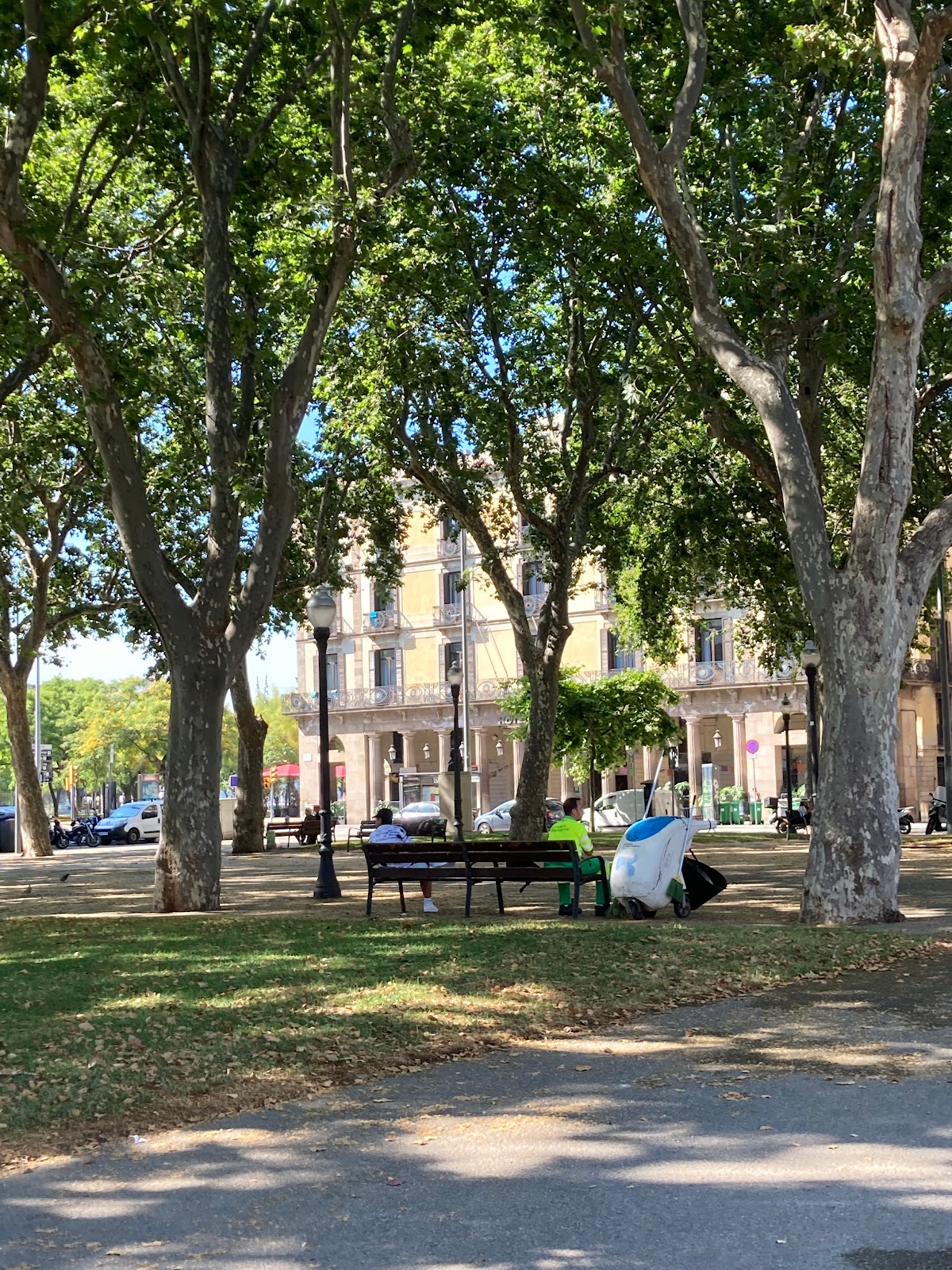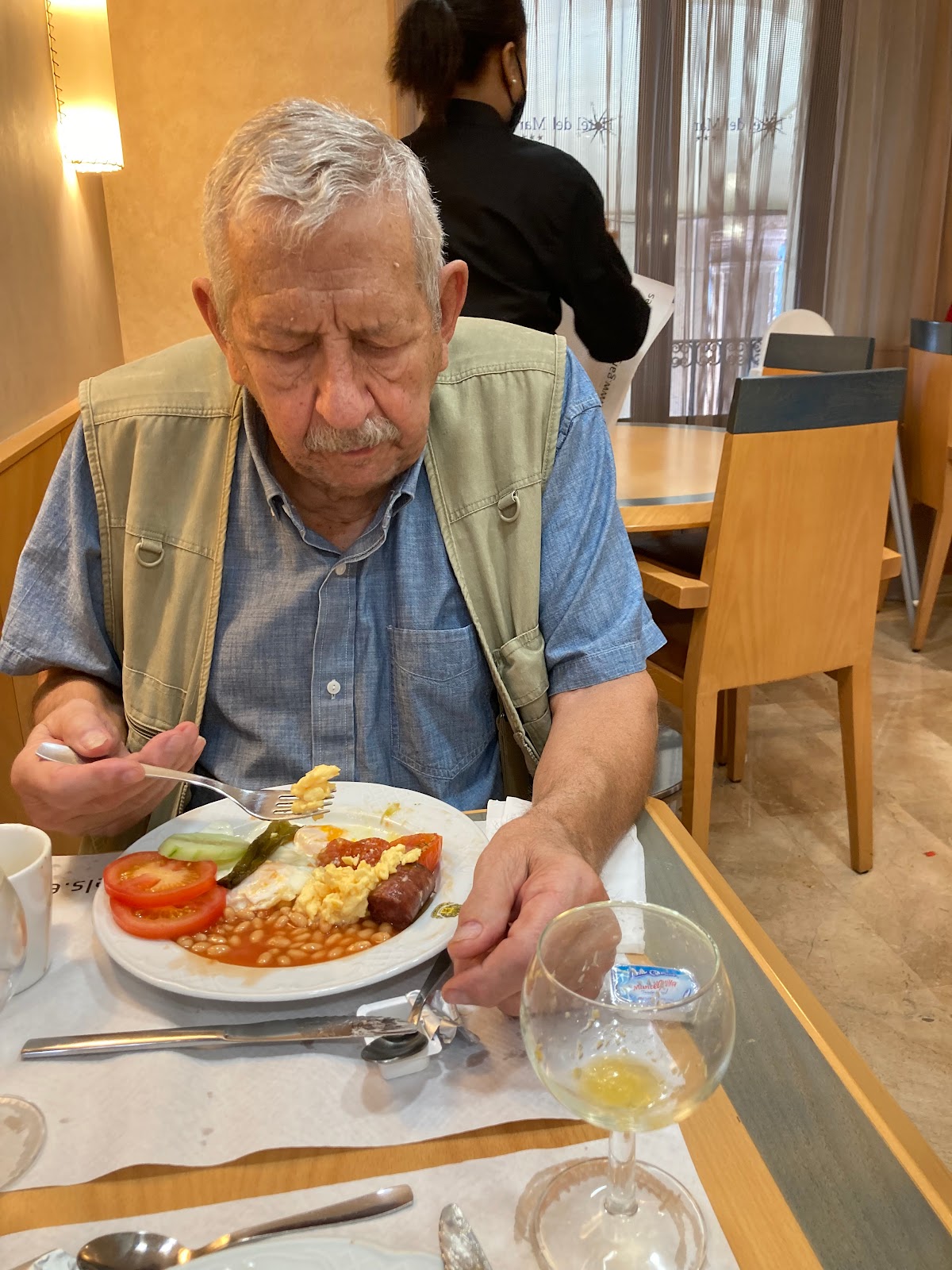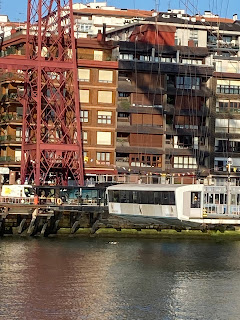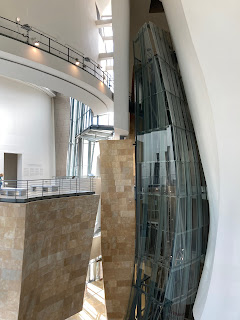We flew to Barcelona, Catalonia, Spain, a day before the Aegean Odyssey embarkation and stayed at the Hotel Del Mar, near the port. A smallish room but fine for us to catch up on the time-zone difference. And a great breakfast buffet, with conversations in multiple languages around us.
The next afternoon, we took a taxi to the pier, got our passwords checked and temps taken, and took a quick Covid test before we boarded the Aegean Odyssey. Between that time and end of the cruise two weeks later, in our group of 24, eight people tested positive. They were quarantined in their cabins until they tested negative. Passengers were required to wear masks in all the public rooms and on public transportation. We were grateful to escape the virus during the cruise.
The first tour day our "relaxed" group (one of eight separate 25-person groups in this Road Scholar tour) took a panoramic bus tour of Barcelona, exploring the sites of the 1992 Summer Olympics. I wondered, in that congested area, how the Games accommodated the traffic.
The tour on the second morning was to the Picasso Museum, where many of the artist's early works are displayed.
He was self-taught until the age of 16, then went to school to learn the traditional methods. He was a prolific sketcher; this wall displays only a small number of them.
It was a half-mile walk from the bus to the museum and back. Art passed on this field trip. Using my cane made the walk doable. I'm not much of a fan of art museums, but we had an excellent guide who made this one interesting.
***************
The Aegean Odyssey left Barcelona that afternoon for a day at sea on the Mediterranean passing through the Strait of Gibraltar, which separates Europe and Africa. We disembarked in Tangier, Morocco. It's historically a city for international trade. Our relaxed group skipped the hilly climb to the Medina, the old city and marketplace. Instead, we visited Cap Spartel, a lighthouse tower near where the Mediterranean Sea meets the Atlantic Ocean.
We also went to Hercules' Cave, of archaeological and mythological fame. I was proud that Art and I both managed the walk on the downward-sloping stones.
And an extremely rough night and day at sea, when we were advised not to move around on the ship any more than was necessary. We appreciated the grab bars in the shower and in all the hallways.
***************
Porto, our next port of call, is the second largest city in Portugal. In the medieval Ribeira district, narrow cobbled streets wind past merchants' houses and cafes.
From Wikipedia: "Bilbao is one of the most important ports in Spain. Beginning in the 1870s, Bilbao experienced rapid industrialization based on the export of iron ore and the development of the iron and steel and shipbuilding industries." Thirty years ago it was a dirty and polluted industrial city. The industry is no longer dominant, and the city has become revitalized. The significant amount of money spent came from the EU, from taxes remaining in the region rather than being sent to the central government, and land sales available because many companies went bankrupt and had to sell their properties to pay taxes.
We drove from the port up the river, so we could see where the old industrial sections had been. Our first stop was at the Vizcaya Bridge, the first ever transporter bridge built in the world, and one of the few surviving examples. It's a UNESCO World Heritage Site. The Vizcaya Bridge connects Portugalete and Getxo, two port towns along the Bay of Biscay. It's like a ferryboat suspended from a bridge.
There's a hilltop park that overlooks the city. We could see the revitalized river area and the Guggenheim Museum. As we stood at the railing, I said to Art, "I could live here."
I'm not much into art, but the Guggenheim Museum was impressive. I love how the building is designed. I can't imagine how an architect's mind works to create "unconventional" structures.
Here's just one of the exhibits:
Here's a link to a Lonely Planet article about how the museum came to be.
Ports of call, Part 2, coming soon.


























4 comments:
I would like to take that trip, the museum photos are wonderful. That is good you evaded Covid.
Thank you for the excellent tour of your tour. People, hands in pockets, looking up is such an apt description.
I'm so glad you went! Your photos are great, thank you for sharing them.
I could live there, too. What a beautiful place. And I did enjoy the museum as well. Thank you, and I look forward to more ports of call. :-)
Post a Comment